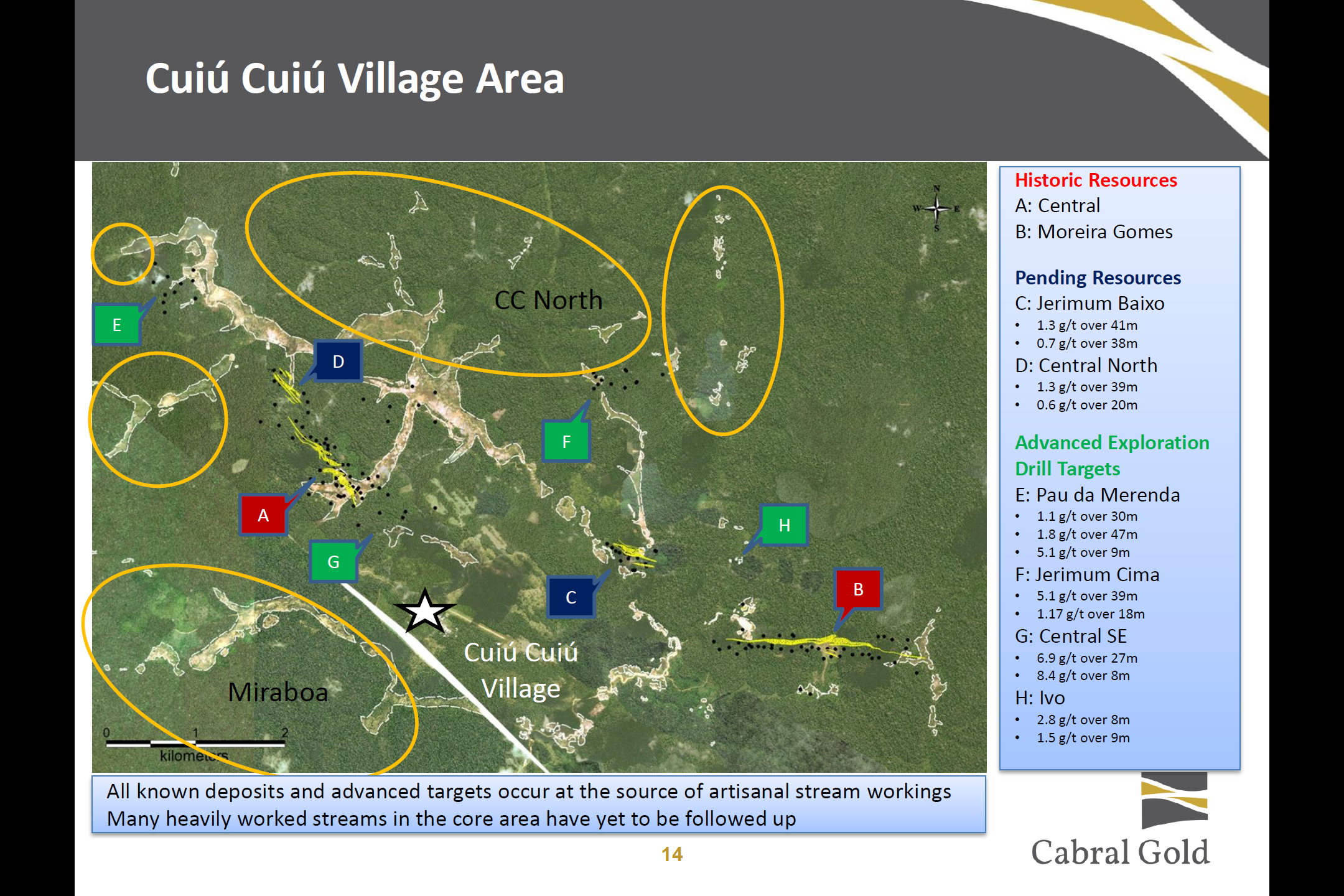What happened? The successful launch of Cabral Gold (TSXV:CBR) as a public company on Thursday, November 2nd.
Cabral is an exploration company with two assets in northern Brazil. The "key asset" for Cabral is Cuiu Cuiu, which covers a massive area of 360 square kilometers. Alan Carter and colleagues explored Cuiu Cuiu when it was owned by Magellan Minerals, prior to Magellan being acquired by Anfield Nickel for the Coringa deposit. Thankfully, they found a way to keep Cuiu Cuiu out of Anfield's hands and have now brought it to the public market in Cabral Gold.

So what? The big one is still out there.
The Tocantizinho Trend hosted what Cabral describes as the largest gold rush in terms of number of people involved in the history of the world from the 1970s to 1990s, known as the Tapajos gold rush. It was estimated to have produced 20-30 million ounces of gold from placer mining. Cuiu Cuiu itself was estimated to have yielded 2 million ounces of gold from streams, but the source for much of that gold is yet to be identified.
In an extended interview, Alan mentioned that the size distribution for in situ gold deposits in areas with such large amounts of placer gold typically follow a power law distribution. That piqued my attention because a power law means "fat tails". There have been some good discoveries of gold deposits in the Tocantizinho Trend, but there is reason to believe there are still some big ones out there waiting to be found.
Despite all that placer gold mining, there has been relatively little exploration and development of hard rock deposits. Eldorado Gold has the Tocantizinho deposit, which is adjacent to Cuiu Cuiu and it is expected to produce 170,000 ounces of gold annually for 10 years at sustaining cash costs of US$615/oz. Not bad!
The Tocantizinho deposit currently has a resource estimate of 2.1 million ounces indicated and 0.1 million inferred. It is estimated that 200,000 ounces of gold were taken from streams at Tocantizinho during the Tapajos gold rush. For comparison, ca. 2 million ounces of gold was taken from streams at Cuiu Cuiu during the gold rush and Cuiu Cuiu has a historic resource of 0.1 million ounces inferred and 1.2 million inferred. The historic resource at Cuiu Cuiu was prepared in 2011 by none other than Magellan Minerals, who subsequently focused their attention on Coringa instead of Cuiu Cuiu. That proved to be a powerful decision as it led Anfield to takeover Magellan for Coringa in Q1-2016.
What next? It's time to resolve unfinished business at Cuiu Cuiu!
Cuiu Cuiu has a massive gold-in-soil anomaly that was partially tested by Magellan Minerals who completed an initial resource estimate in 2011 based on 26,000 meters of drilling. They have an additional 22,000-odd meters of drill core that was assayed, but not included in a resource estimate. Now, Cabral Gold can pick up where Magellan Minerals left off in 2011 and execute a comprehensive work program on Cuiu Cuiu. Watch for them to deliver meaningful results quickly as they reinterpret old data and tackle new areas of this massive project. The continuity of key people in this situation is just wonderful to see.
It is my pleasure to share a short 5-minute clip from start of conversation with Alan recorded November 7th, 2017 here: https://drive.google.com/open?id=1xsm0yqBVkstx0DFgSnQ5K7MRUUyWMCts
Stay tuned for full hour-long interview coming soon!
Please note that Peter "@Newton" Bell was not compensated to prepare and distribute these documents. Peter Bell owns shares of Cabral Gold and may buy or sell at any time without notice.
These documents contain statements that are forward looking statements and are subject to various risks and uncertainties concerning the specific factors disclosed under the heading “Risk Factors” and elsewhere in the Company’s periodic filings with Canadian securities regulators. Such information contained herein represents management’s best judgment as of the date hereof based on information currently available. The Company does not assume the obligation to update any forward-looking statement.




